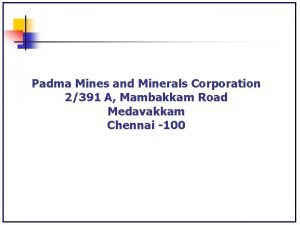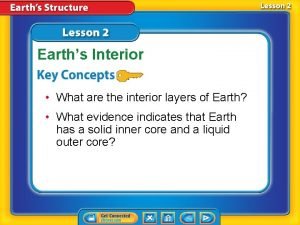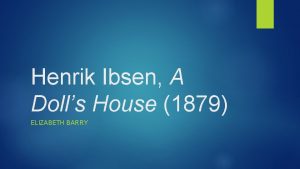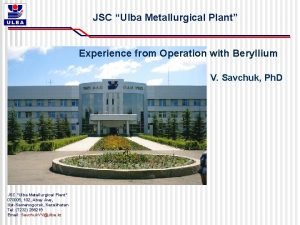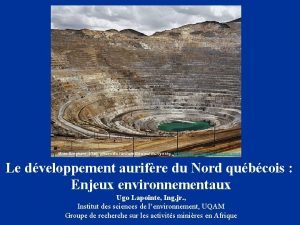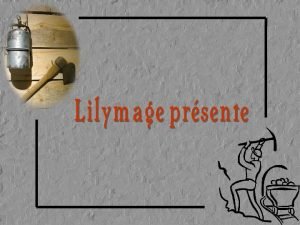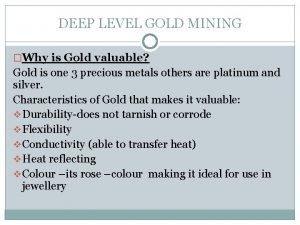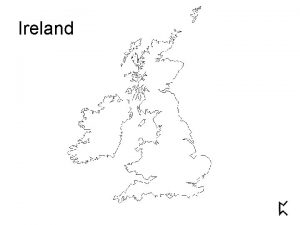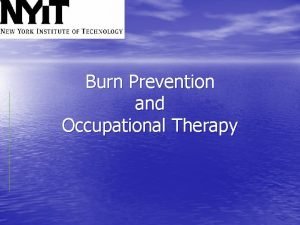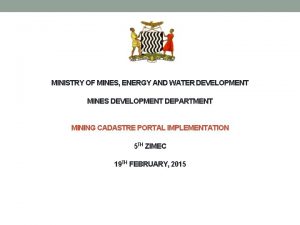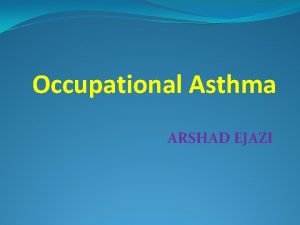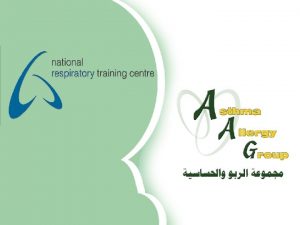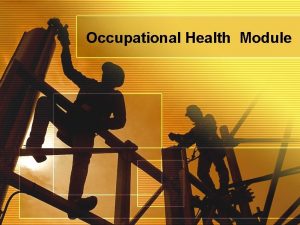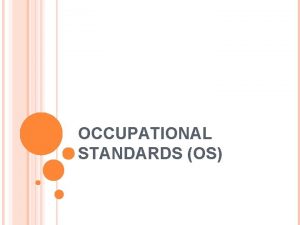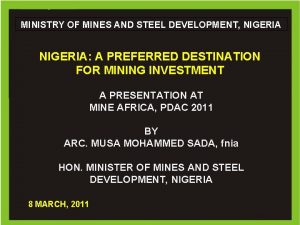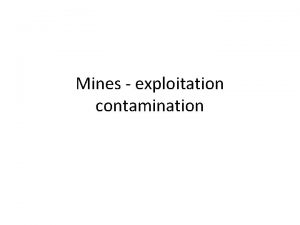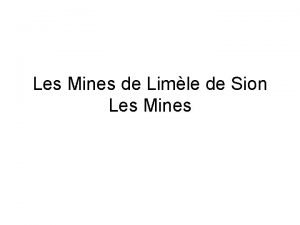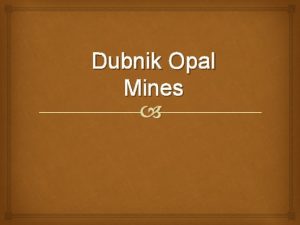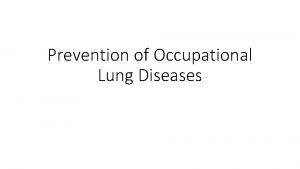Occupational Diseases in Quarries and Mines in Ireland





















- Slides: 21

Occupational Diseases in Quarries and Mines in Ireland Dr Tom Donnelly

Learning objectives Historical Occupational Disease from Quarrying and Mines Understand How Lungs Work. What is crystalline Silica and its adverse effects Control Measures Other Issues in Quarries related to the lungs.

Historical Cases Withdrawal off Nitrates and Angina: Wet dynamite (TNT) in contact with skin, angina when on holidays Crow (Tapping) Bar Blasted out of Dynamite hole with resultant head injury and change of character (Frontal Lobe), Phineas Gage 25 yrs old in 1848, railway construction worker with resultant change of character, he eventually died from epilepsy

Anatomy of the Lungs Medulla controls diaphragm- CO 2 drive Pharynx is common junction (Aspiration) Tongue attached to Jaw Bone Surface Area 120 M 2 (Tennis Court) C 02 out, O 2 in Site of disease Route of entry 5 Lobes(3 R, 2 L)

Natural Protection Hairs, turbinates Humidication & filtration, Smell Narrow nostrils, large nasal cavity 90 degree bend of nasopharynx Wet mucous & tonsils Reflexes – cough, sneeze, gag, swallow Macrophages – White Blood cells and find an eat bacteria Cilary hairs down to bronchioles(escalator)

Definition and types of dust ü Dusts are solid particles, ranging in size from below 1 µm up to at least 100 µm, which may be or become airborne, depending on their origin, physical characteristics and ambient conditions (WHO definition), ü Industrial dusts have different biological effect depending on their physico-chemical characteristics, size of particles and conditions of exposure, ü Absorption and deposition of dust in the human dirways depend on the diameter of the particle, level of fragmentation of particles and minute ventilation, ü According to biological effect dusts are divided into irritant,

Types of pneumoconioses according to pathological changes in the lungs Collagen pneumoconioses may be caused by an exposure to fibrinogenic dusts or by an altered tissue response to a non fibrogenic dust (sillicosis, asbestosis): : Ø permanent alteration or destruction of alveolar architecture, Ø collagenous stromal reaction of moderate to maximal degree, Ø permanent scarring of lung. Non-collagen pneumoconioses may be caused by an exposure to non-fibrogenic dusts (stannosis): Ø the alveolar architecture remains intact, Ø the stromal reaction is minimal and consists mainly of reticulin fibres, Ø the dust reaction is potentially reversible. Pneumoconioses caused by an exposure to mixed dust – coal worker’s pneumoconiosis (CWP) =anthracosis.

Occupational Lung Diseases In Ireland (ROI) Occupational physicians’ reports (SWORD, 2007 -2012) N = 45

Site and Diseases Airways – asthma and bronchitis Lung substance (Parenchyma) – farmers lung, silicosis, asbestosis Lining of Lung – mesothelioma (cancer) Toxic inhalations – chlorine, carbon monoxide, hydrogen sulphide Infections – TB, pneumonia

Lung Reaction Highly water soluble substances affect upper airways Inflammatory response eg bronchitis Allergic – asthma and rhinitis Fibrotic – scarring, silica or spores Neoplastic – cancer of nasal cavity, pleura Wilfred Owen (Dulce et Decorum est) – Chlorine attack 1917

Medical Classification Obstructive disorders – Partial blockage of the air passages Restrictive disorders – change the nature of the lung substance (fibrosis) or chest wall (pleura) Lung function testing by measuring amount of air/given time helps differentiate the two types

Types of Occupational Lung Fibrosis ü Sillicosis ü Coal-worker pneumoconiosis (CWP) ü Pneumoconiosis - tuberculosis ü Welders’ pneumoconiosis ü Asbestosis ü Talcosis ü Graphitosis ü Pneumoconioses caused by a metal dusts

Silicosis Silica 2 nd most common element in Earths Crust (after oxygen) If < 10 um (microns) in diameter it will reach Alveoli of lungs It inactivates Macrophages which are lungs last line of defense Exposure to Silica and development of Silicosis is associated with high levels of TB Granite, Sandstone and Slate and Sand (not black lough Neagh sand) – main component of Flint and Glass Crystalline (deadly) and Amorphous (benign) Quartz is 2 nd commonest mineral in world (1 st=Feldspar)

Silica Asbestos is made from silica It is a poor conductor of electricity but when Boron and other compounds added it is used in Computer Chips Spines of nettles are made of silica Macrophages try to ingest it

Silicosis OELV for respirable crystalline silica is 0. 1 mg/m 3 Chronic Silicosis > 10 yrs exposure to low levels of silica Accelerated Silicosis – 5 -10 years exposure to high levels Acute Silicosis - Few weeks up to 5 yrs to develop FFP 3 particulate filter mask Substituting Crystalline Silica with alternative Dust suppression by damping Dust extraction

Symptoms & Signs Symptoms = Complaints Cough Shortness of Breath Wheeze Chest Pain Weight Loss Fatique Blood in Spit Signs=physical findings Wheeze Rapid Breathing Cyanosis (Blue) Finger Clubbing Accessory muscles

Asthma Pye. Radius 2 1 cm 2 4 cm 2 Reversible Airways Obstruction Workplace Sensitiser < 10 um diameter Chemicals labelled R 42 Biological origin (foreign proteins and enzymes) Prevent exposure (2 ary antiinflmmatory , broncho dilators)

Symptoms of exposure to respiratory sensitisers Asthma Rhinitis Coughing conjunctivitis wheezing chest tightness Immediate or late symptoms Continued exposure once sentised permenant lung damage substitution……. . Control Risk assessment Health surveillance

Occupational Asthma Isocyanates Car painter Floor/grain Bakers Solder flux – pine rosin Electronics Resins Boat manufacture Lab animals Research students Wood dust Joiners Plants Florists Welding fumes Welders Glutaraldehyde Nurses Fish Protein Prawns

Occupational Asthma Recurrent Wheeze Cough – esp night time Shortness of breath Chest tightness Test – pulmonary function measures rate of flow (indirect measure of diameter)

Occupational asthma Onset after starting job Improvement at weekends/holidays Exacerbations with heavy exposure Presence of recognized asthma inducer in the workplace Suspision that undue number of other workers affected
 Padma mines and minerals corporation
Padma mines and minerals corporation Earth's layers
Earth's layers Department of primary industries and mines
Department of primary industries and mines Butterfly land mine
Butterfly land mine Summary of king solomon's mines
Summary of king solomon's mines Mabou mines dollhouse
Mabou mines dollhouse Children working in coal mines
Children working in coal mines Min imt mines albi
Min imt mines albi Lepestock mines
Lepestock mines Psava
Psava Devegetation and defacing of landscape
Devegetation and defacing of landscape Concours mines ponts statistiques
Concours mines ponts statistiques National land finance cooperative society
National land finance cooperative society Silver mines
Silver mines Edward burtynsky mines
Edward burtynsky mines Crown dilmun v sutton
Crown dilmun v sutton Hotel des mines faymoreau
Hotel des mines faymoreau Deep sea mining
Deep sea mining Lifestyle modern
Lifestyle modern Venn diagram communicable and noncommunicable diseases
Venn diagram communicable and noncommunicable diseases Section 19-3 diseases caused by bacteria and viruses
Section 19-3 diseases caused by bacteria and viruses Retention hyperkeratosis dermnet
Retention hyperkeratosis dermnet
